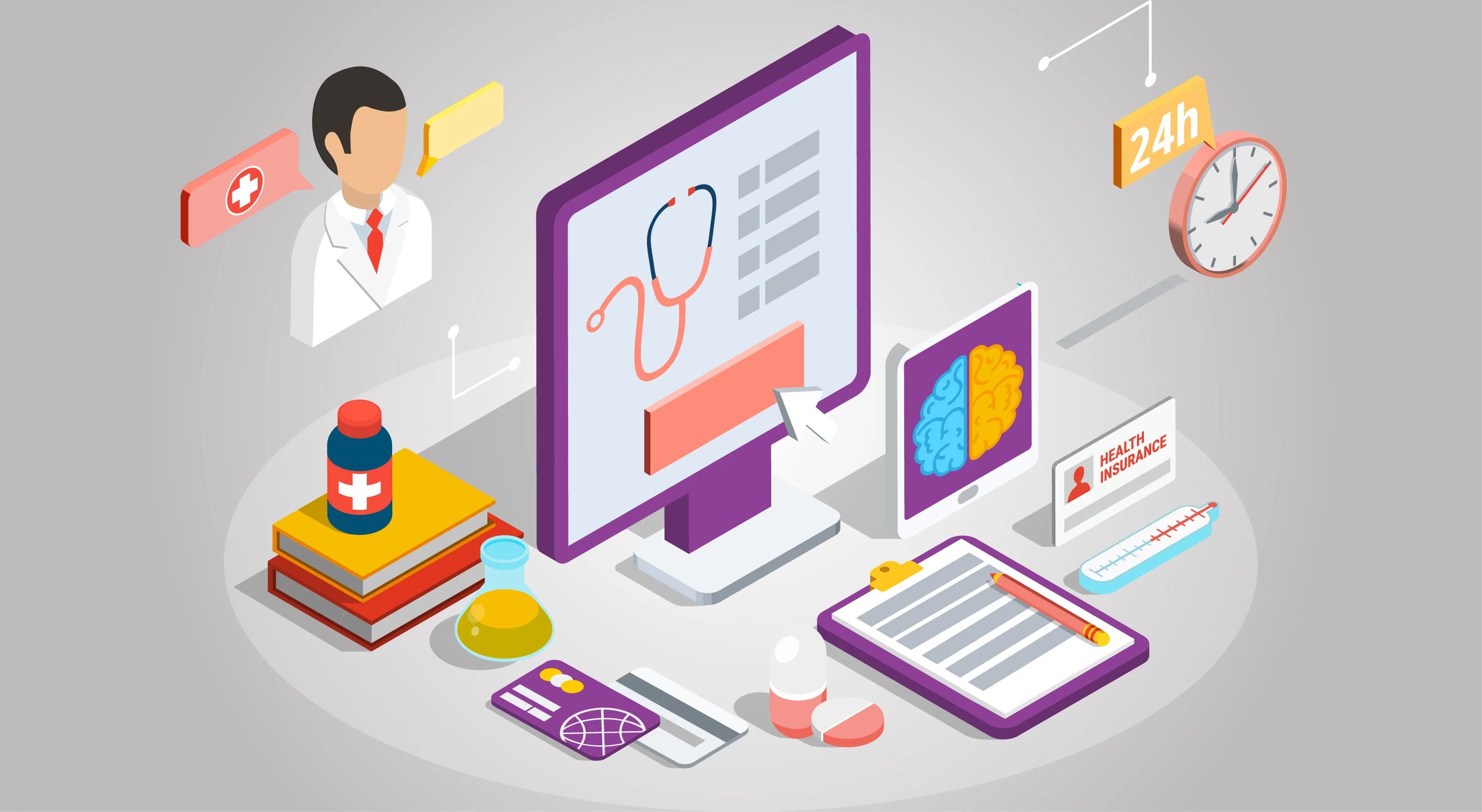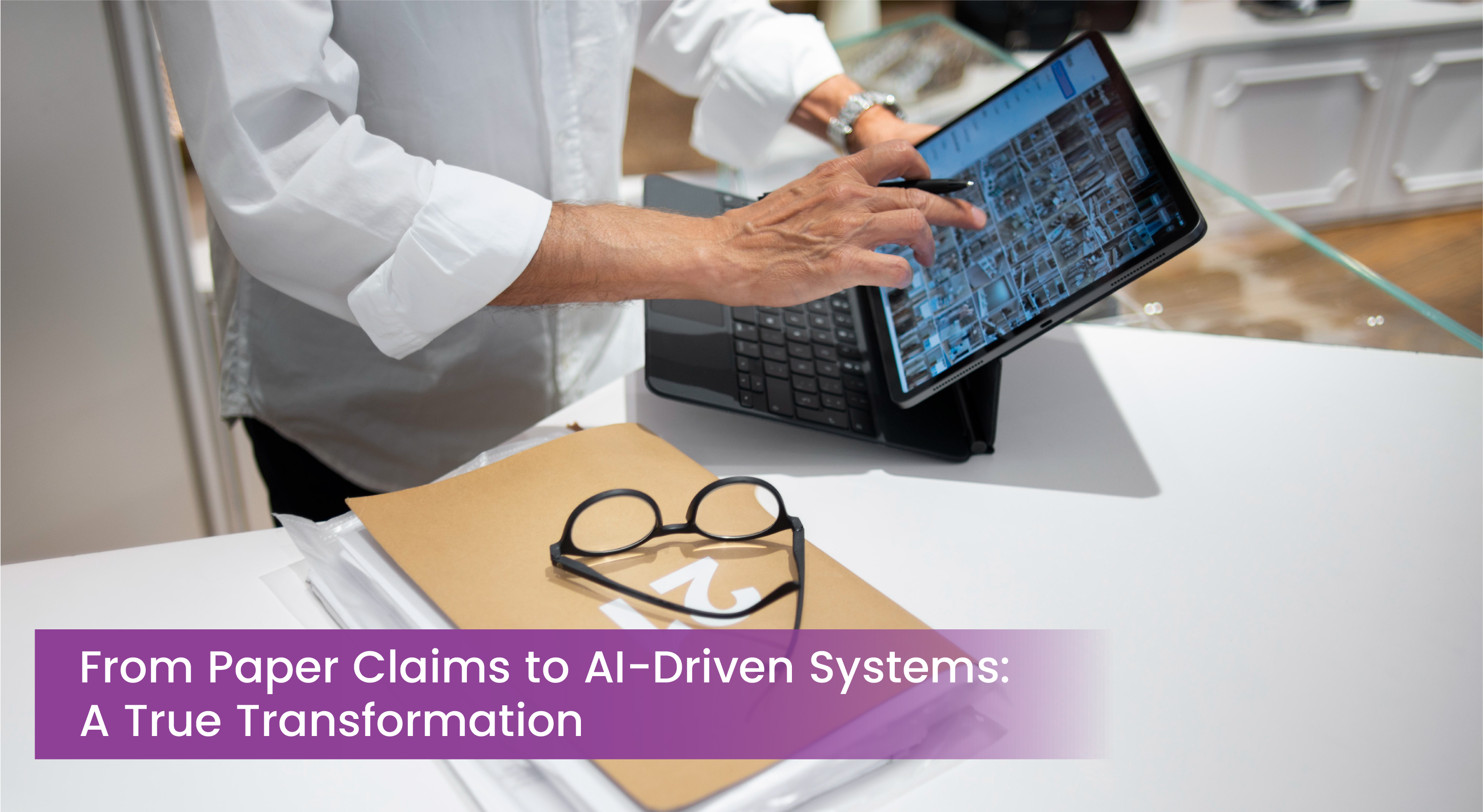
Evolution of Medical Billing: Paper to AI Systems
By Billmate
Sept. 22, 2025, 6:08 a.m.
Introduction
Medical billing has always been the financial backbone of healthcare. What started as handwritten paper claims that could take weeks to process has evolved into AI-powered billing systems that deliver speed, accuracy, and compliance in seconds. This journey reflects more than just technological change. It represents the evolution of how healthcare providers get paid, how patients experience billing, and how practices sustain financial health.
In this article, we will walk through the history of medical billing, explore the evolution of billing systems, and explain how AI and modern technology are redefining billing practices in 2025 and beyond.
How Medical Billing Started

The history of medical billing begins in an era when there were no electronic records, no standardised coding systems, and no automated compliance checks. Providers relied solely on paper-based forms to submit claims to insurance companies. These paper claims were:
-
Time-consuming to prepare and submit
-
Frequently lost in transit
-
Vulnerable to human error in documentation
-
Slow to process, delaying reimbursements
The manual process often created frustration for both providers and patients, who faced long waits and billing inaccuracies. Despite these flaws, paper claims were the first step in formalising medical billing practices and laid the groundwork for future innovation.
The Shift to Electronic Billing
The true evolution of medical billing systems began in the late 20th century as healthcare adapted to the digital age. With the introduction of computers and electronic data transfer, billing began to shift away from paper. In the 1970s and 1980s, Medicare and private insurers started experimenting with electronic claim submissions, which significantly reduced processing times. A major breakthrough came in 1996 with the Health Insurance Portability and Accountability Act (HIPAA), which standardised electronic transactions, paving the way for secure and compliant data exchange. By the 2000s, Electronic Health Records (EHRs) and digital billing platforms had become widely adopted, enabling providers to integrate medical records with billing processes. This era marked the beginning of true modernisation, where speed, compliance, and efficiency became central to billing systems.
Medical Billing in the Early 2000s
The early 2000s saw the rapid adoption of electronic data interchange (EDI), enabling providers to send claims directly to insurers electronically. This eliminated many of the delays associated with mailing paper claims. At the same time, medical coding systems such as ICD-9 and later ICD-10 became standardised, allowing for more precise reporting of diagnoses and procedures. Regulatory oversight from organisations like CMS (Centres for Medicare & Medicaid Services) grew stronger, ensuring providers adhered to compliance requirements.
This period represented a turning point, as billing systems evolved from mere administrative tools to become a strategic component of revenue cycle management, enabling providers to reduce denials, improve cash flow, and enhance compliance.
The Role of AI in Medical Billing Evolution

Today, the most significant transformation is being driven by artificial intelligence (AI) and automation technologies. AI-powered billing systems are capable of:
-
Automating medical coding by analysing clinical notes and applying accurate codes in real-time.
-
Predicting claim denials by identifying patterns that could trigger rejections.
-
Enhancing compliance by automatically checking claims against HIPAA and payer-specific requirements.
-
Accelerating processing times, turning weeks of manual work into minutes of automation.
According to the American Academy of Professional Coders (AAPC), providers using AI-based billing solutions can reduce claim denials by up to 30%, improving both revenue and operational efficiency. AI is not just streamlining billing; it is making it smarter, predictive, and more reliable.
From Paper Claims to AI-Driven Systems: A True Transformation

The difference between past and present medical billing practices cannot be overstated. What once took weeks of manual effort can now be completed in seconds with AI-powered systems.
-
Speed: Instead of waiting weeks for reimbursements, providers receive faster payments
-
Accuracy: Human error in coding and data entry has been replaced with machine learning algorithms that achieve 95%+ accuracy.
-
Compliance: Automated systems ensure every claim is HIPAA-compliant before submission.
-
Scalability: AI systems allow even small practices to process large volumes of claims efficiently.
This transformation has fundamentally altered the role of billing in healthcare, shifting it from a back-office burden to a strategic driver of financial health.
Medical Billing Transformation in 2025 and Beyond

As we move further into 2025, the evolution of medical billing is entering its most exciting phase yet. The future will not only be AI-driven but also built around transparency, security, and patient-centred care. Key Trends to Watch:
-
Blockchain Integration: For secure, tamper-proof billing records.
-
Robotic Process Automation (RPA): Handling repetitive tasks like eligibility checks and claim submissions.
-
Interoperability: Seamless connections between EHRs, payers, and billing systems.
-
Patient-Centred Billing Portals: Allowing patients to view, understand, and pay bills with ease.
-
Fully Automated Claim Approvals: AI and insurers working together for instant decision-making.
These innovations are set to make billing not just faster and more accurate, but also more transparent and trustworthy for patients.
The Technology Impact on Healthcare Revenue Cycle Management
Technology has revolutionised healthcare revenue cycle management in three major ways:
-
Reducing Errors: Automation minimises medical coding errors and ensures accurate claims processing.
-
Enhancing Compliance: Built-in compliance checks keep providers aligned with CMS and HIPAA requirements.
-
Maximising Reimbursements: With fewer denials and faster approvals, practices can improve their cash flow and financial stability.
Providers who embrace these changes will be better positioned to thrive in an increasingly competitive and regulated healthcare landscape.
Learn how your practice can benefit: Explore BillMate’s Medical Billing Services
Why AI-Driven Systems Are the Future

The future of electronic medical billing lies in leveraging AI, automation, and data-driven insights to remove inefficiencies. For providers, this means:
-
Lower administrative costs by outsourcing medical billing to expert teams equipped with AI tools.
-
Stronger compliance with automated HIPAA and CMS safeguards.
-
Happier patients who receive accurate, transparent bills without unnecessary delays.
This is not just about technology; it’s about giving healthcare professionals more time to focus on patient care while ensuring financial stability.
Conclusion
The evolution of medical billing tells a powerful story of progress. From the paper claims of the past to the AI-driven systems of today, billing has transformed into a sophisticated, technology-enabled process that powers the financial health of modern healthcare. By embracing AI-powered billing systems, providers can reduce errors, strengthen compliance, and maximise reimbursements, all while focusing on what truly matters: delivering exceptional patient care.
Frequently Asked Questions
1: What is the history of medical billing?
Medical billing started with paper claims, later shifting to electronic billing and now AI-driven systems.
2: How did HIPAA impact medical billing?
HIPAA standardized electronic transactions, ensuring secure, compliant, and faster billing processes.
3: What role does AI play in medical billing today?
AI automates coding, reduces errors, predicts denials, and speeds up claims processing.
4: Why is AI-driven billing the future?
AI enhances accuracy, compliance, scalability, and transparency in healthcare billing.
5: What trends will shape medical billing in 2025 and beyond?
Blockchain, RPA, interoperability, patient portals, and AI-powered claim approvals will define the future.
What To Read Next

By Billmate | January 09, 2026
healthcare-recredentialing-deadlines
Learn healthcare recredentialing deadlines, challenges, and solutions to prevent denied claims, net…

By Billmate | January 07, 2026
Best 10 Medical Billing Companies in the USA for Accurate and Reliable Services for 2026
Explore the best 10 medical billing companies in the USA for 2026, offering reliable and compliant …

By Billmate | December 30, 2025
CPT Code 99214: Complete Billing, Documentation, and Compliance Guide
Complete CPT Code 99214 guide covering billing rules, documentation, diagnosis codes, compliance ti…

By Billmate | October 23, 2025
Doctors Sound the Alarm About Insurance Downcoding: How It’s Impacting Medical Billing & Clinic Rev…
Learn how insurance downcoding is reducing reimbursements and affecting medical billing accuracy in…

By Billmate | October 22, 2025
What Is Medical Billing? A Complete Guide for Healthcare Professionals
Learn what medical billing is, how it works, and why it’s essential for healthcare revenue. Discove…
Join our team to be a part
of our story
Learn more about our career, education and
posting jobs, and
submit simple application.